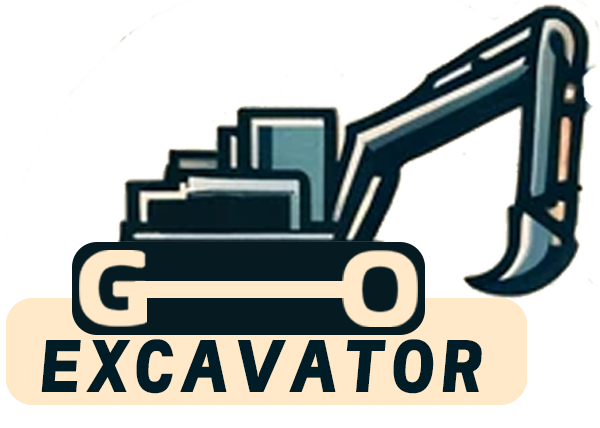
Excavators are vital machines in the construction and mining industries, performing a wide range of tasks such as digging, lifting, and transporting materials. Among the many types of excavators, backhoe excavators and face shovel excavators are two of the most commonly used. While they might appear similar at glance, they have distinct features and are suited to different types of work.
What is a Backhoe Excavator?
Design and Structure
A backhoe excavator, often simply called a backhoe, features a two-part articulated arm mounted on the back of a tractor or a front loader. The arm has a digging bucket at the end, which faces towards the operator’s cabin. This configuration allows the operator to pull the bucket towards the machine to dig or move materials.
Primary Uses
Backhoes are versatile machines used in construction, agriculture, and small-scale mining operations. Their primary functions include:
- Digging trenches, ditches, and foundations
- Excavating and moving soil and other materials
- Loading trucks with loose materials
- Landscaping and grading
- Demolition of small structures
What is a Face Shovel Excavator?
Design and Structure
A face shovel excavator,known as a power shovel, features a forward-facing bucket attached to a boom and stick. Unlike the backhoe’s inward-pulling motion, the face shovel’s bucket moves away from the machine, allowing it to load materials from a higher level.
Primary Uses
Face shovels are predominantly used in large-scale mining and heavy construction projects. Their primary functions include:
- Excavating and loading rock, soil, and other heavy materials
- Stripping overburden in mining operations
- Removing and loading large quantities of material efficiently
- Heavy-duty excavation tasks that require powerful digging forces
Key Differences Between Backhoe and Face Shovel Excavators
Design and Operation
Backhoe Excavator:
- Bucket Orientation: The bucket faces towards the operator, allowing an inward-pulling digging motion.
- Articulated Arm: Features a two-part arm that can extend and retract.
- Mounting: Typically mounted on a tractor or front loader chassis.
- Mobility: More maneuverable and versatile in tight spaces.
Face Shovel Excavator:
- Bucket Orientation: The bucket faces away from the operator, allowing an outward-pushing motion.
- Boom and Stick: Features a rigid boom and stick for powerful digging.
- Mounting: Usually mounted on a tracked or wheeled undercarriage designed for heavy-duty tasks.
- Mobility: Less maneuverable than backhoes, but highly effective in large, open areas.

Application Areas
Backhoe Excavator:
- Ideal for small to medium-sized construction projects.
- Commonly used in urban areas and confined spaces.
- Versatile for a range of tasks, including digging, trenching, and material handling.
Face Shovel Excavator:
- Best suited for large-scale mining and heavy construction.
- Effective in open-pit mining and large excavation projects.
- Designed for high-volume material loading and heavy-duty excavation.
Advantages and Limitations
Backhoe Excavator:
- Advantages:
- Versatile and adaptable to various tasks.
- Can operate in confined spaces.
- Easier to transport between sites.
- Limitations:
- Less powerful than face shovels for heavy-duty excavation.
- Smaller bucket size, limiting material handling capacity.
Face Shovel Excavator:
- Advantages:
- Extremely powerful for heavy excavation tasks.
- Large bucket size for efficient material loading.
- Ideal for high-volume operations.
- Limitations:
- Less maneuverable and versatile.
- Requires more space to operate effectively.
- More expensive and complex to maintain.
Both backhoe excavators and face shovel excavators play crucial roles in their respective fields. Understanding their differences helps in selecting the right machine for the job.
A Comprehensive Guide to Buying a Excavator Second Hand
Purchasing a second-hand excavator can be a cost-effective solution for your construction or landscaping needs. However, buying used machinery comes with its own set of challenges and considerations. This comprehensive guide will walk you through [...]
Comprehensive Guide to Hyundai Mini Excavators: Features and Prices
Mini excavators have become indispensable tools in the construction and landscaping industries. Hyundai Construction Equipment, a global leader in heavy machinery, offers a range of mini excavators known for their reliability, efficiency, and advanced features. [...]
How to Extend the Service Life of Excavator Parts
Excavators are indispensable machines in the construction and mining industries. They perform heavy-duty tasks that demand robust components and meticulous maintenance. Extending the service life of excavator parts not only reduces operational costs but enhances [...]
Kymron Excavators: Innovative, Sustainable Construction Machinery
In the dynamic world of construction and heavy machinery, Kymron has emerged as a game-changer. Specializing in advanced excavator technology, Kymron is redefining industry standards with its commitment to innovation, efficiency, and sustainability. Company Overview [...]
Bulldozer vs. Wheeled Excavator: Which Machine is Better for Moving Soil?
Moving soil is a fundamental task in construction, landscaping, and earthmoving projects. Choosing the right machinery for the job can significantly impact efficiency, cost, and project timelines. Two of the most commonly used machines for [...]
Why Are Small Excavators Favored? A Comprehensive Guide
In the world of construction and landscaping, efficiency and versatility are key. Among the myriad of machinery available, small excavators have risen in popularity. But what makes them so favored? Introduction to Small Excavators Small [...]




